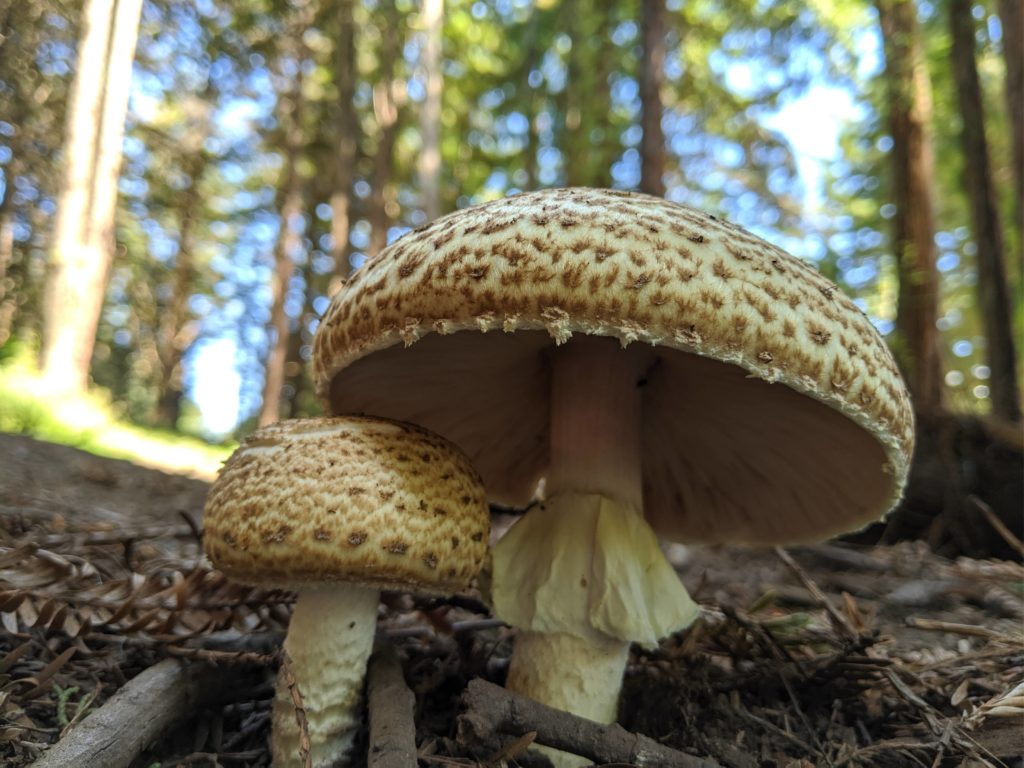Agaricus augustus is a large woodland fungus of the agaricaceae family. It is considered one of the finest of edible mushrooms, it is thick and firm and described by many as being very tasty; others describe it as non-descript. Being a true princely mushroom, it is easily recognized even from a distance – hence, why it is also called the Prince mushroom.
The Prince Mushroom is common in the North West of America, but also grows in Central America, North Africa, Europe, Asia, New Zealand and Australia. These mushrooms can also be cultivated. Agaricus julius is the Rocky Mountain version of Agaricus augustus so the names are sometimes used interchangeably.

My name is Austin Collins.
I've dedicated my life to Mushrooms.
I believe Mushrooms are the best kept secret when it comes to health and well being.
For that reason, I would like to share a company with you that in my opinion makes the best mushroom products on the market.
The company is called Noomadic Herbals, my favorite supplement they make is called "Mushroom Total".
I take their products every day and they have helped me think better and have more energy. Give them a try.
-Austin
Agaricus Augustus Identification and Description
Cap: When out in full the cap may reach 25cm or more in diameter. The cap is cream and covered with brown or reddish scales. When young the cap is spherical and with age becomes more convex. The flesh is white but may appear yellow when bruised.
Gills: Crowded gills that are not attached to the stem; white to a pale pink turning a darker purple with maturity.
Stem: Can reach 20cm tall and 4cm in diameter. The stem is white or pale cream and ringed with scales and a flared and hanging ring.
Smell: young fruiting bodies have an almond or marzipan odour.
Taste: Can be used in any recipe that requests portobello mushrooms or other large varieties.
Spores: Epsilloidal.
Spore color: Dark or chocolate brown.
Edibility: Edible mushroom, tasty and large.
Habitat: Grows on the ground in woodland, along trails, roads and forests. Often found under conifers. Seasonal growth from early summer to late October if suitable conditions.
Agaricus Augustus Look a likes
It can be difficult to identify the Agaricus species mistaking poisonous for edible, this leads to mushroom-related gastrointestinal distress.
Do not confuse Agaricus augustus with the poisonous Amanita smithiana or Smith’s amanita. Like Agaricus augustis, the Smith’s amanita has a scaly stem with a ring around it but the spores are white, not dark brown like Agaricus augustus. It is also said that the Smith’s amanita smells of old socks and not the almond-like smell of the Agaricus augustus.
Agaricus Augustus Benefits
The Agaricus species of mushroom have been well researched for their nutritional and health boosting properties including in the treatment of cancer, diabetes and high levels of cholesterol. There is no current research to support these benefits specifically for Agaricus augustus however, this is not to say there are not benefits associated with eating them as part of a healthy and balanced diet.
Agaricus Augustus Dosage
It is always advisable to consume only small amounts of mushrooms to start with to ensure that there is no intolerance. Edible wild mushrooms should always be cooked for consumption.
Agaricus Augustus Toxicity, Safety & Side Effects
There is no reported toxicity for The Prince Mushroom; however, 4 adults reported gastro-intestinal discomfort following consumption [1]. It is worth considering whether the mushrooms are grown as there are reports that they can bioaccumulate trace metals from the environment [2.] it may be advisable to prevent harvesting from roadside.
References:




Love this! Do you have a mailing list?
I found chaga in a birch forest while traveling. I was so awed that I couldn’t collect it, even for immediate use. I’ll find it again, and will accept the invitation. I thought you’d understand.